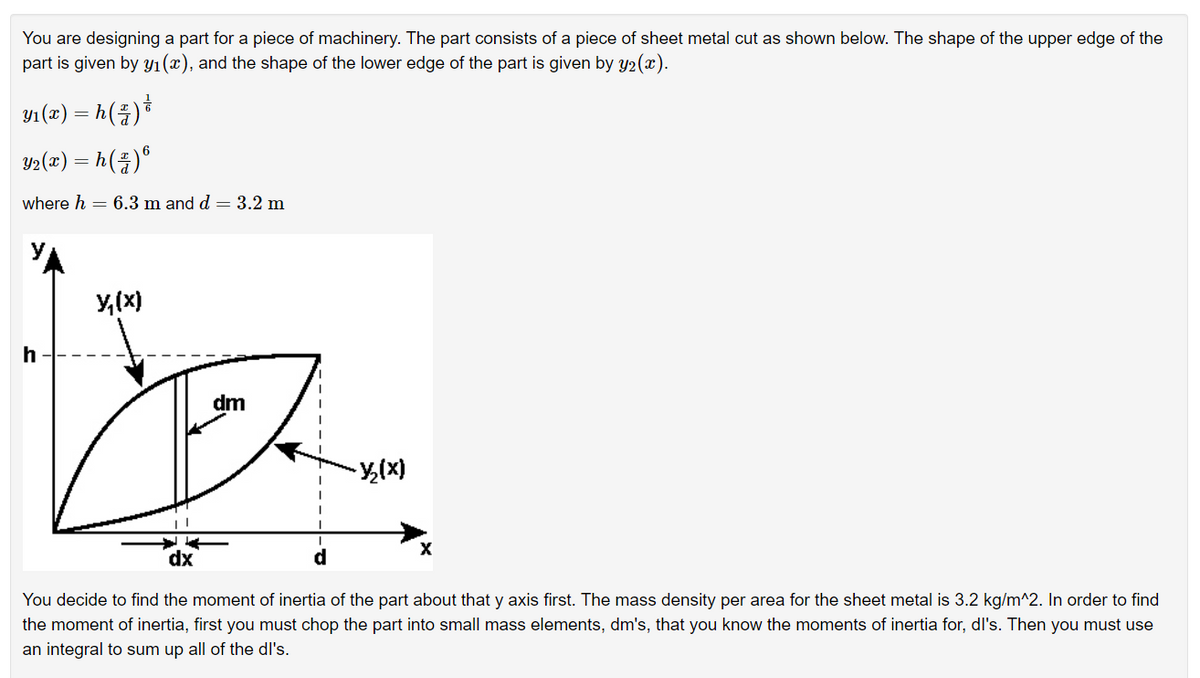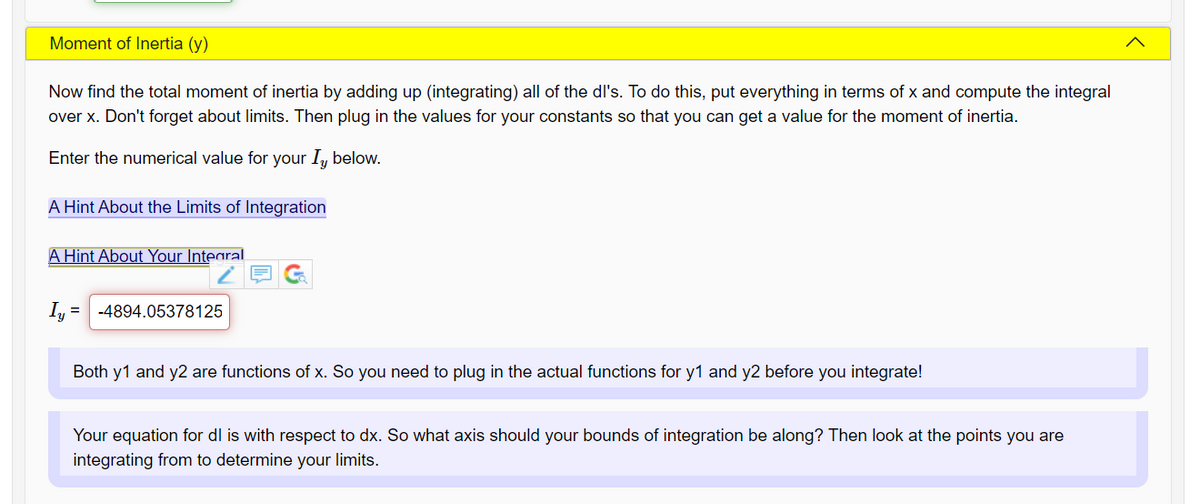Moment of Inertia (y) Now find the total moment of inertia by adding up (integrating) all of the dl's. To do this, put everything in terms of x and compute the integral over x. Don't forget about limits. Then plug in the values for your constants so that you can get a value for the moment of inertia. Enter the numerical value for your I, below. A Hint About the Limits of Integration A Hint About Your Integral = "I -4894.05378125 Both y1 and y2 are functions of x. So you need to plug in the actual functions for y1 and y2 before you integrate! Your equation for dl is with respect to dx. So what axis should your bounds of integration be along? Then look at the points you are integrating from to determine your limits.
Rigid Body
A rigid body is an object which does not change its shape or undergo any significant deformation due to an external force or movement. Mathematically speaking, the distance between any two points inside the body doesn't change in any situation.
Rigid Body Dynamics
Rigid bodies are defined as inelastic shapes with negligible deformation, giving them an unchanging center of mass. It is also generally assumed that the mass of a rigid body is uniformly distributed. This property of rigid bodies comes in handy when we deal with concepts like momentum, angular momentum, force and torque. The study of these properties – viz., force, torque, momentum, and angular momentum – of a rigid body, is collectively known as rigid body dynamics (RBD).
I am working on this problem and have been getting wrong answers I am not sure if it is due to integration or not but what I have so far determined is that. Note y1 = y1(x) and y2 = y2(x)
distance to dm (r)=x
Differential Area (dA) = (y1 - y2) * dx
Differential Mass (dm) = sigma * (y1-y2) * dx
Differential Moment (dI) = x^2 * sigma(y1-y2)dx


Trending now
This is a popular solution!
Step by step
Solved in 2 steps with 2 images




